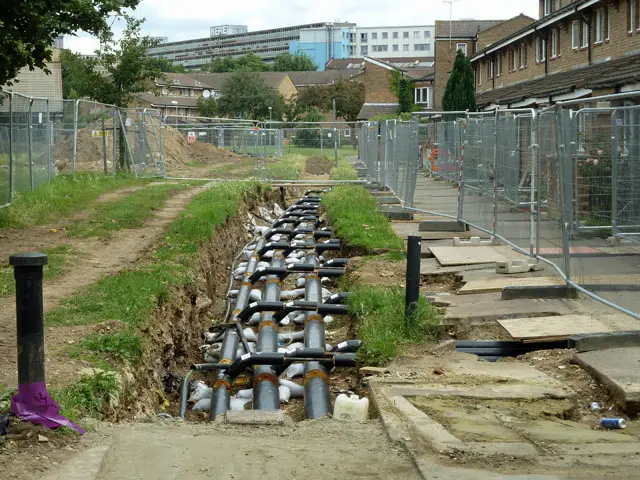 On the 7th April 2017, the UK Government announced the provision of £24 million for district heating schemes across England and Wales. The measure is part of the “central heating for cities” initiative and is designed to boost confidence in the sector and help to achieve ambitious targets for renewable heat generation, but concerns have been raised about the lack of protection for consumers, with some calling for better regulation of the sector instead of government subsidies.
On the 7th April 2017, the UK Government announced the provision of £24 million for district heating schemes across England and Wales. The measure is part of the “central heating for cities” initiative and is designed to boost confidence in the sector and help to achieve ambitious targets for renewable heat generation, but concerns have been raised about the lack of protection for consumers, with some calling for better regulation of the sector instead of government subsidies.
Subsidies can help to offset some of the cost of ground source heat pumps and boost uptake of of these systems, which is beneficial for the homeowner and helps the UK work towards its renewables targets.
Although none of the money is coming to schemes in Scotland, many will be watching closely to see how much it will help to boost investor confidence in this somewhat overlooked sector. With £320 million of funding coming down the pike for heat networks between now and 2021, the scheme is hoping to facilitate the construction of as many as 200 heat networks.
Such ambitious plans will surely result in benefits for district heating schemes here in Scotland over the next four years and beyond. Not only will the proposals in England and Wales help to better establish the technologies involved and demonstrate the benefits of district heating, but Scottish businesses operating in the industry will be in a strong position to win some of the contracts to deliver these systems given their excellent track record in renewable energy.
 There are a number of similar schemes at various stages of planning and development in Scotland, such as the River Tay Heat Pump and District Heating Scheme, a similar one in the River Clyde and the possibility of former mining areas across the central belt providing ground source heat for district schemes.
There are a number of similar schemes at various stages of planning and development in Scotland, such as the River Tay Heat Pump and District Heating Scheme, a similar one in the River Clyde and the possibility of former mining areas across the central belt providing ground source heat for district schemes.
With all the advantages that heat networks offer, on the face of it, it seems like a smart choice for most consumers. Announcing the funding, Energy Minister Baroness Lucy Neville-Rolfe said, “Heat networks can significantly improve the efficiency with which heat is provided to our towns and cities, as well as helping to develop local infrastructure and reduce carbon. The new scheme will help us to develop viable reforms to make the most of the heat we produce and use it effectively to bring bills down for people across the country.”
According to the Committee on Climate Change, low-carbon heat networks could provide 20% of the United Kingdom’s heat generation needs by 2050, taking us towards an overall reduction of 450% in associated emissions during that same time frame.
Listen carefully though, and you will hear a few dissenting voices. Not big businesses arguing for continued heat and energy production from fossil fuels – that argument was lost a long time ago. The voices of dissent belong to that most important of groups – the customers. The people whose homes are being heated by district schemes are not all finding their bills to be cheaper.
Indeed, they are sometimes paying a handsome premium for the privilege of being supplied by a shared scheme. A customer of one such scheme, Charles Montlake has gone on record stating, “Those of us who have District Heat know that the current suppliers overcharge, far from 30% cheaper we believe it is 300% more expensive (my bill is about 1,500 a year for a 3 bedroom flat, if I had gas it would be about 500 a year).”
Mr Montlake goes on to complain of the lack of an appeals process for the prices he and others are paying for heat. He says, “There is no appeal to this over charging. We have tried OFGEM, Ombudsman, ASA, MPs etc. Some of us are taking the suppliers to court but they settle before we can be heard.” Mr Montlake is calling for regulation, not funding, and is asking for people to lobby against funding subsidies until there is proper regulation in place for the sector.
Some have also questioned the efficiency of district heat. Anecdotal evidence has suggested that some schemes have installed equipment with low efficiency ratings, which is bad both for the environment and for customers’ bank balances alike. In some cases, this could mean customers would be better off not participating in the district heating scheme at all.
It would be good for these issues to be resolved quickly. Nobody wants to pay over the odds for their heating, and it is in everyone’s interests for heat generation to be done in as environmentally friendly way as possible.
There is a balance that needs to be struck. District heating needs to be viable as a business proposition in order to be adopted widely. This means companies have to be able to turn a profit, but it also means that the price consumers pay has to be affordable. Many will say, “let the market decide”, but those waters have already been muddied by government subsidies.
It seems the only sensible way forward is for a system of proportionate regulation that will create a level playing field for businesses operating in the sector and guard against consumers being overcharged to maximise returns for investors.
Regulation will pave the way for a sustainable, subsidy-free industry that can stand on its own two feet, providing clean and affordable energy for the country well into the future.
Let’s hope that Holyrood can learn the lessons from Westminster’s experience and come up with a system of incentives and regulation that helps Scotland expand its green energy interests in a way that protects the environment, supports business and safeguards the interests of consumers.
